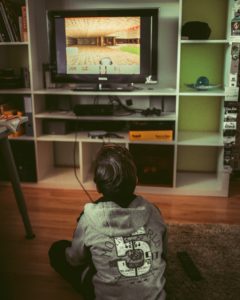How Do You Teach Online Etiquette?
Perhaps your child or teen with ADHD struggles socially, especially in the virtual world. These groundbreaking strategies can help you teach the critical skills they need.
by Caroline Maguire, MEd, ACCG, PCC
 Each virtual environment, just like each real-world environment, has its own social norms and situational expectations. A joke told to a group on Discord might be hilarious yet fall flat with another group.
Each virtual environment, just like each real-world environment, has its own social norms and situational expectations. A joke told to a group on Discord might be hilarious yet fall flat with another group.
Some parents may feel overwhelmed as they watch their child with ADHD socializing in the virtual world. How can this mild-mannered kid now rage at people and put them down? Parents wonder if their child, who may struggle to connect in person, really is connecting in the virtual world. Watching the online gaming, communication, and virtual hangouts from afar, many parents are not sure.
Whatever the environment, helping your child with ADHD learn to interpret the social norms and discern whether a joke will be funny or appropriate with that group means helping them learn a critical life skill. This is especially important now during the coronavirus pandemic, in a time of social distancing and increased online learning, working, and socializing.
If your child can learn to navigate the virtual world socially, especially with you as their collaborative partner and coach, they can translate those skills into in-person relationships. The following strategies can help you help your child.
 1. Help your child learn to identify the social norms and the unspoken rules.
1. Help your child learn to identify the social norms and the unspoken rules.
Help your child think through the virtual social world they are stepping into by asking, in a non-threatening tone, questions about the way your child is hanging out online, how the meeting functions, what are the games, and what are the players.
Every virtual environment has its own social norms. If someone is shouting at other players while playing Fortnight on a loop, there are unspoken rules about how many put-downs are acceptable. It’s important to help your child learn how to read the situation and determine what the unspoken rules are for each situation.
Every environment, even virtual ones, are layered and have a climate to consider. The millions of subtle, unspoken cues in an environment tell us what behavior is appropriate in that situation. Unspoken rules depend on the situation, the people, and the players. And similar to everything else in life, kidding and banter might be funny in one context and offensive in another.
2. Learn to take a situational assessment.
When your child learns to read the unspoken rules and social cues, she is ready to interpret situations anywhere. Help your child:
- Interpret body language
- Pinpoint the expected behavior the situation demands
- Identify the unspoken rules of any environment
- Tune into people’s mental states
- Conform to social norms
- Join a group in a social situation
- Identify the perspectives and points of view of teachers, teammates, and peers
- Adjust communication with different personalities
 3. Teach your child to read between the lines.
3. Teach your child to read between the lines.
Games make learning more fun. Play a game with your child to interpret not what people say, but what they mean based on body language, facial expressions, and tone of voice.
If need be, prompt your child and share with her some ways to guess what the person means, such as, What do the person’s body signals and tone of voice tell us they are trying to say? What do we know about this person? Ask her to pick out a sharp tone in one party guest, someone at the mall who is angry but does not say she is angry, or someone who uses sarcasm, and ask her how she knows this is the case.
Next, ask her to give you examples of when she might need to read between the lines. Ask her to point out text and subtext as you go through daily life. When your child is observing someone, ask her what she sees. What does that person’s body language mean? What could she know about that person just from the tone of voice?
4. Teach your child learn to read the room.
Help your child learn to clue into social cues by playing the following game.
Prompt your child to pick out two people in the family to observe and then to report back to you what are their facial expressions, body language, and tone of voice when they are angry, frustrated, nervous, or frightened. When you and your child are at a party, at a mall, or engaging with your family, ask him what he sees. What does that person’s body language mean? What information can you gather just from the person’s tone of voice? In every environment, there are socially acceptable guidelines for behavior, including virtual rooms.
 5. Help your child improve his or her self-regulation.
5. Help your child improve his or her self-regulation.
Insulting other gamers may be okay in one situation and yet there may be an unspoken line you cannot cross. When a child is raging at other people, breaking a gaming console, and constantly being angry, he or she needs to learn better self-regulation.
Help your child identify what makes him excited, lose control of his body, or become flooded with emotions. In the moment, guide your child to pinpoint what is going on inside his body and mind. These are signals that show him his current emotional state.
Ask your child, Is there a particular topic that makes you experience a reaction? What happened before you got excited, or felt big emotions? Arm your child with calming strategies that you design with him collaboratively, so he is prepared in the heat of the moment to head off any signs of losing control.
 Caroline Maguire, MEd, ACCG, PCC, is a personal coach, trainer, and author. You can find her groundbreaking book Why Will No One Play with Me? at carolinemaguireauthor.com.
Caroline Maguire, MEd, ACCG, PCC, is a personal coach, trainer, and author. You can find her groundbreaking book Why Will No One Play with Me? at carolinemaguireauthor.com.

I hope parents can pay attention to the needs of their kids with ADHD. Their rage fits are definitely the most difficult ones to deal with and parents face disappointment and frustration due to that. I would just suggest one thing to the parents of such kids, please practice patience. They will learn gradually and you would be proud of them for sure. Make it fun and engaging so they don’t lose interest due to boredom. I am sure the anxiety would be going up when you don’t see your efforts bearing fruits. Hang in there and again, be patient.